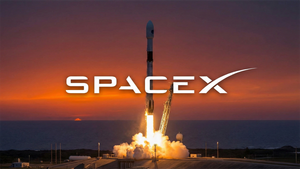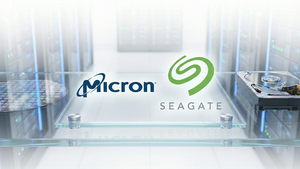
The global semiconductor industry is in the midst of an unprecedented boom, often dubbed the "AI Supercycle," with projections soaring towards a staggering $1 trillion in annual sales by 2030. This meteoric rise, far from a typical cyclical upturn, is a profound structural transformation primarily fueled by the insatiable demand for Artificial Intelligence (AI) and other cutting-edge technologies. As of October 2025, the industry is witnessing a symbiotic relationship where advanced silicon not only powers AI but is also increasingly designed and manufactured by AI, setting the stage for a new era of technological innovation and economic significance.
This surge is fundamentally reshaping economies and industries worldwide. From the data centers powering generative AI and large language models (LLMs) to the smart devices at the edge, semiconductors are the foundational "lifeblood" of the evolving AI economy. The economic implications are vast, with hundreds of billions in capital expenditures driving increased manufacturing capacity and job creation, while simultaneously presenting complex challenges in supply chain resilience, talent acquisition, and geopolitical stability.
Technical Foundations of the AI Revolution in Silicon
The escalating demands of AI workloads, which necessitate immense computational power, vast memory bandwidth, and ultra-low latency, are spurring the development of specialized chip architectures that move far beyond traditional CPUs and even general-purpose GPUs. This era is defined by an unprecedented synergy between hardware and software, where powerful, specialized chips directly accelerate the development of more complex and capable AI models.
New Chip Architectures for AI:
- Neuromorphic Computing: This innovative paradigm mimics the human brain's neural architecture, using spiking neural networks (SNNs) for ultra-low power consumption and real-time learning. Companies like Intel (NASDAQ: INTC) with its Loihi 2 and Hala Point systems, and IBM (NYSE: IBM) with TrueNorth, are leading this charge, demonstrating efficiencies vastly superior to conventional GPU/CPU systems for specific AI tasks. BrainChip's Akida Pulsar, for instance, offers 500x lower energy consumption for edge AI.
- In-Memory Computing (IMC): This approach integrates storage and compute on the same unit, eliminating data transfer bottlenecks, a concept inspired by biological neural networks.
- Specialized AI Accelerators (ASICs/TPUs/NPUs): Purpose-built chips are becoming the norm.
- NVIDIA (NASDAQ: NVDA) continues its dominance with the Blackwell Ultra GPU, increasing HBM3e memory to 288 GB and boosting FP4 inference performance by 50%.
- AMD (NASDAQ: AMD) is a strong contender with its Instinct MI355X GPU, also boasting 288 GB of HBM3e.
- Google Cloud (NASDAQ: GOOGL) has introduced its seventh-generation TPU, Ironwood, offering more than a 10x improvement over previous high-performance TPUs.
- Startups like Cerebras are pushing the envelope with wafer-scale engines (WSE-3) that are 56 times larger than conventional GPUs, delivering over 20 times faster AI inference and training. These specialized designs prioritize parallel processing, memory access, and energy efficiency, often incorporating custom instruction sets.
Advanced Packaging Techniques:
As traditional transistor scaling faces physical limits (the "end of Moore's Law"), advanced packaging is becoming critical.
- 3D Stacking and Heterogeneous Integration: Vertically stacking multiple dies using Through-Silicon Vias (TSVs) and hybrid bonding drastically shortens interconnect distances, boosting data transfer speeds and reducing latency. This is vital for memory-intensive AI workloads. NVIDIA's H100 and AMD's MI300, for example, heavily rely on 2.5D interposers and 3D-stacked High-Bandwidth Memory (HBM). HBM3 and HBM3E are in high demand, with HBM4 on the horizon.
- Chiplets: Disaggregating complex SoCs into smaller, specialized chiplets allows for modular optimization, combining CPU, GPU, and AI accelerator chiplets for energy-efficient solutions in massive AI data centers. Interconnect standards like UCIe are maturing to ensure interoperability.
- Novel Substrates and Cooling Systems: Innovations like glass-core technology for substrates and advanced microfluidic cooling, which channels liquid coolant directly into silicon chips, are addressing thermal management challenges, enabling higher-density server configurations.
These advancements represent a significant departure from past approaches. The focus has shifted from simply shrinking transistors to intelligent integration, specialization, and overcoming the "memory wall" – the bottleneck of data transfer between processors and memory. Furthermore, AI itself is now a fundamental tool in chip design, with AI-driven Electronic Design Automation (EDA) tools significantly reducing design cycles and optimizing layouts.
Initial reactions from the AI research community and industry experts are overwhelmingly positive, viewing these advancements as critical enablers for the continued AI revolution. Experts predict that advanced packaging will be a critical innovation driver, extending performance scaling beyond traditional transistor miniaturization. The consensus is a clear move towards fully modular semiconductor designs dominated by custom chiplets optimized for specific AI workloads, with energy efficiency as a paramount concern.
Reshaping the AI Industry: Winners, Losers, and Disruptions
The AI-driven semiconductor revolution is fundamentally reshaping the competitive landscape for AI companies, tech giants, and startups alike. The "AI Supercycle" is creating new opportunities while intensifying existing rivalries and fostering unprecedented levels of investment.
Beneficiaries of the Silicon Boom:
- NVIDIA (NASDAQ: NVDA): Remains the undisputed leader, with its market capitalization soaring past $4.5 trillion as of October 2025. Its vertically integrated approach, combining GPUs, CUDA software, and networking solutions, makes it indispensable for AI development.
- Broadcom (NASDAQ: AVGO): Has emerged as a strong contender in the custom AI chip market, securing significant orders from hyperscalers like OpenAI and Meta Platforms (NASDAQ: META). Its leadership in custom ASICs, network switching, and silicon photonics positions it well for data center and AI-related infrastructure.
- AMD (NASDAQ: AMD): Aggressively rolling out AI accelerators and data center CPUs, with its Instinct MI300X chips gaining traction with cloud providers like Oracle (NYSE: ORCL) and Google (NASDAQ: GOOGL).
- TSMC (NYSE: TSM): As the world's largest contract chip manufacturer, its leadership in advanced process nodes (5nm, 3nm, and emerging 2nm) makes it a critical and foundational player, benefiting immensely from increased chip complexity and production volume driven by AI. Its AI accelerator revenues are projected to grow at over 40% CAGR for the next five years.
- EDA Tool Providers: Companies like Cadence (NASDAQ: CDNS) and Synopsys (NASDAQ: SNPS) are game-changers due to their AI-driven Electronic Design Automation tools, which significantly compress chip design timelines and improve quality.
Competitive Implications and Disruptions:
The competitive landscape is intensely dynamic. While NVIDIA faces increasing competition from traditional rivals like AMD and Intel (NASDAQ: INTC), a significant trend is the rise of custom silicon development by hyperscalers. Google (NASDAQ: GOOGL) with its Axion CPU and Ironwood TPU, Microsoft (NASDAQ: MSFT) with Azure Maia 100 and Cobalt 100, and Amazon (NASDAQ: AMZN) with Graviton4, Trainium, and Inferentia, are all investing heavily in proprietary AI chips. This move allows these tech giants greater cost efficiency, performance optimization, and supply chain resilience, potentially disrupting the market for off-the-shelf AI accelerators.
For startups, this presents both opportunities and challenges. While many benefit from leveraging diverse cloud offerings built on specialized hardware, the higher production costs associated with advanced foundries and the strategic moves by major players to secure domestic silicon sources can create barriers. However, billions in funding are pouring into startups pushing the boundaries of chip design, interconnectivity, and specialized processing.
The acceleration of AI-driven EDA tools has drastically reduced chip design optimization cycles, from six months to just six weeks for advanced nodes, accelerating time-to-market by 75%. This rapid development is also fueling new product categories, such as "AI PCs," which are gaining traction throughout 2025, embedding AI capabilities directly into consumer devices and driving a major PC refresh cycle.
Wider Significance: A New Era for AI and Society
The widespread adoption and advancement of AI-driven semiconductors are generating profound societal impacts, fitting into the broader AI landscape as the very engine of its current transformative phase. This "AI Supercycle" is not merely an incremental improvement but a fundamental reshaping of the industry, comparable to previous transformative periods in AI and computing.
Broader AI Landscape and Trends:
AI-driven semiconductors are the fundamental enablers of the next generation of AI, particularly fueling the explosion of generative AI, large language models (LLMs), and high-performance computing (HPC). AI-focused chips are expected to contribute over $150 billion to total semiconductor sales in 2025, solidifying AI's role as the primary catalyst for market growth. Key trends include a relentless focus on specialized hardware (GPUs, custom AI accelerators, HBM), a strong hardware-software co-evolution, and the expansion of AI into edge devices and "AI PCs." Furthermore, AI is not just a consumer of semiconductors; it is also a powerful tool revolutionizing their design, manufacturing processes, and supply chain management, creating a self-reinforcing cycle of innovation.
Societal Impacts and Concerns:
The economic significance is immense, with a healthy semiconductor industry fueling innovation across countless sectors, from advanced driver-assistance systems in automotive to AI diagnostics in healthcare. However, this growth also brings concerns. Geopolitical tensions, particularly trade restrictions on advanced AI chips by the U.S. against China, are reshaping the industry, potentially hindering innovation for U.S. firms and accelerating the emergence of rival technology ecosystems. Taiwan's dominant role in advanced chip manufacturing (TSMC produces 90% of the world's most advanced chips) heightens geopolitical risks, as any disruption could cripple global AI infrastructure.
Other concerns include supply chain vulnerabilities due to the concentration of advanced memory manufacturing, potential "bubble-level valuations" in the AI sector, and the risk of a widening digital divide if access to high-performance AI capabilities becomes concentrated among a few dominant players. The immense power consumption of modern AI data centers and LLMs is also a critical concern, raising questions about environmental impact and the need for sustainable practices.
Comparisons to Previous Milestones:
The current surge is fundamentally different from previous semiconductor cycles. It's described as a "profound structural transformation" rather than a mere cyclical upturn, positioning semiconductors as the "lifeblood of a global AI economy." Experts draw parallels between the current memory chip supercycle and previous AI milestones, such as the rise of deep learning and the explosion of GPU computing. Just as GPUs became indispensable for parallel processing, specialized memory, particularly HBM, is now equally vital for handling the massive data throughput demanded by modern AI. This highlights a recurring theme: overcoming bottlenecks drives innovation in adjacent fields. The unprecedented market acceleration, with AI-related sales growing from virtually nothing to over 25% of the entire semiconductor market in just five years, underscores the unique and sustained demand shift driven by AI.
The Horizon: Future Developments and Challenges
The trajectory of AI-driven semiconductors points towards a future of sustained innovation and profound technological shifts, extending far beyond October 2025. Both near-term and long-term developments promise to further integrate AI into every facet of technology and daily life.
Expected Near-Term Developments (Late 2025 – 2027):
The global AI chip market is projected to surpass $150 billion in 2025 and could reach nearly $300 billion by 2030, with data center AI chips potentially exceeding $400 billion. The emphasis will remain on specialized AI accelerators, with hyperscalers increasingly pursuing custom silicon for vertical integration and cost control. The shift towards "on-device AI" and "edge AI processors" will accelerate, necessitating highly efficient, low-power AI chips (NPUs, specialized SoCs) for smartphones, IoT sensors, and autonomous vehicles. Advanced manufacturing nodes (3nm, 2nm) will become standard, crucial for unlocking the next level of AI efficiency. HBM will continue its surge in demand, and energy efficiency will be a paramount design priority to address the escalating power consumption of AI systems.
Expected Long-Term Developments (Beyond 2027):
Looking further ahead, fundamental shifts in computing architectures are anticipated. Neuromorphic computing, mimicking the human brain, is expected to gain traction for energy-efficient cognitive tasks. The convergence of quantum computing and AI could unlock unprecedented computational power. Research into optical computing, using light for computation, promises dramatic reductions in energy consumption. Advanced packaging techniques like 2.5D and 3D integration will become essential, alongside innovations in ultra-fast interconnect solutions (e.g., CXL) to address memory and data movement bottlenecks. Sustainable AI chips will be prioritized to meet environmental goals, and the vision of fully autonomous manufacturing facilities, managed by AI and robotics, could reshape global manufacturing strategies.
Potential Applications and Challenges:
AI-driven semiconductors will fuel a vast array of applications: increasingly complex generative AI and LLMs, fully autonomous systems (vehicles, robotics), personalized medicine and advanced diagnostics in healthcare, smart infrastructure, industrial automation, and more responsive consumer electronics.
However, significant challenges remain. The increasing complexity and cost of chip design and manufacturing for advanced nodes create high barriers to entry. Power consumption and thermal management are critical hurdles, with AI's projected electricity use set to rise dramatically. The "data movement bottleneck" between memory and processing units requires continuous innovation. Supply chain vulnerabilities and geopolitical tensions will persist, necessitating efforts towards regional self-sufficiency. Lastly, a persistent talent gap in semiconductor engineering and AI research needs to be addressed to sustain the pace of innovation.
Experts predict a sustained "AI supercycle" for semiconductors, with a continued shift towards specialized hardware and a focus on "performance per watt" as a key metric. Vertical integration by hyperscalers will intensify, and while NVIDIA currently dominates, other players like AMD, Broadcom, Qualcomm (NASDAQ: QCOM), and Intel (NASDAQ: INTC), along with emerging startups, are poised to gain market share in specialized niches. AI itself will become an increasingly indispensable tool for designing next-generation processors, creating a symbiotic relationship that will further accelerate innovation.
The AI Supercycle: A Transformative Era
The AI-driven semiconductor industry in October 2025 is not just experiencing a boom; it's undergoing a fundamental re-architecture. The "AI Supercycle" represents a critical juncture in AI history, characterized by an unprecedented fusion of hardware and software innovation that is accelerating AI capabilities at an astonishing rate.
Key Takeaways: The global semiconductor market is projected to reach approximately $800 billion in 2025, with AI chips alone expected to generate over $150 billion in sales. This growth is driven by a profound shift towards specialized AI chips (GPUs, ASICs, TPUs, NPUs) and the critical role of High-Bandwidth Memory (HBM). While NVIDIA (NASDAQ: NVDA) maintains its leadership, competition from AMD (NASDAQ: AMD), Intel (NASDAQ: INTC), and the rise of custom silicon from hyperscalers like Google (NASDAQ: GOOGL), Microsoft (NASDAQ: MSFT), and Amazon (NASDAQ: AMZN) are reshaping the landscape. Crucially, AI is no longer just a consumer of semiconductors but an indispensable tool in their design and manufacturing.
Significance in AI History: This era marks a defining technological narrative where AI and semiconductors share a symbiotic relationship. It's a period of unprecedented hardware-software co-evolution, enabling the development of larger and more capable large language models and autonomous agents. The shift to specialized architectures represents a historical inflection point, allowing for greater efficiency and performance specifically for AI workloads, pushing the boundaries of what AI can achieve.
Long-Term Impact: The long-term impact will be profound, leading to sustained innovation and expansion in the semiconductor industry, with global revenues expected to surpass $1 trillion by 2030. Miniaturization, advanced packaging, and the pervasive integration of AI into every sector—from consumer electronics (with AI-enabled PCs expected to make up 43% of all shipments by the end of 2025) to autonomous vehicles and healthcare—will redefine technology. Market fragmentation and diversification, driven by custom AI chip development, will continue, emphasizing energy efficiency as a critical design priority.
What to Watch For in the Coming Weeks and Months: Keep a close eye on SEMICON West 2025 (October 7-9) for keynotes on AI's integration into chip performance. Monitor TSMC's (NYSE: TSM) mass production of 2nm chips in Q4 2025 and Samsung's (KRX: 005930) HBM4 development by H2 2025. The competitive landscape between NVIDIA's Blackwell and upcoming "Vera Rubin" platforms, AMD's Instinct MI350 series ramp-up, and Intel's (NASDAQ: INTC) Gaudi 3 rollout and 18A process progress will be crucial. OpenAI's "Stargate" project, a $500 billion initiative for massive AI data centers, will significantly influence the market. Finally, geopolitical and supply chain dynamics, including efforts to onshore semiconductor production, will continue to shape the industry's future. The convergence of emerging technologies like neuromorphic computing, in-memory computing, and photonics will also offer glimpses into the next wave of AI-driven silicon innovation.
This content is intended for informational purposes only and represents analysis of current AI developments.
TokenRing AI delivers enterprise-grade solutions for multi-agent AI workflow orchestration, AI-powered development tools, and seamless remote collaboration platforms. For more information, visit https://www.tokenring.ai/





